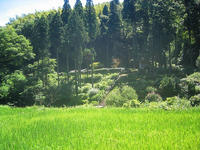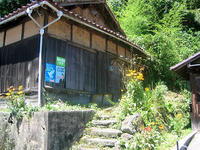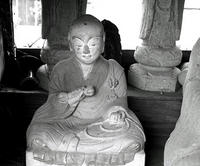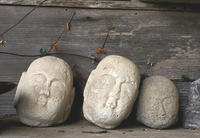You are in: Asia -> Japan -> Iwami Ginzan Silver ... , and traditional search or Image Gallery will yield results of this site only
Iwami Ginzan Silver Mine and its Cultural Landscape
| Site number: | 1246 |
|
| Type of site: | Cultural | |
| Date: | 16-20th century | |
| Date of Inscription: | 2007 | |
| Location: | Asia, Japan, Shimane Prefecture, Ohda City District | |
Up to 75 images are shown here. Click on each for more details or on Image Gallery for more images.
Six official UN languages:
Arabic,
Chinese,
English,
French,
Russian,
Spanish
Other languages: Czech, German, Hungarian, Italian, Japanese, Ukrainian, Vietnamese
Other languages: Czech, German, Hungarian, Italian, Japanese, Ukrainian, Vietnamese
| Description: | Rising to 600 metres south-west of Honshu Island is a cluster of mountains - the Iwami Ginzan Silver Mine. Lying at the center of deep river valleys, the site holds archaeological remnants of large-scale mines, smelting and refining sites and mining settlements that were in use between the 16th and 20th centuries. The mining area is currently greatly forested. Additionally, the site also includes transportation routes employed for transporting silver ore to the coast, as well as port towns where the silver was dispatched to Korea and China. The silver was of immensely high quality ensuing from the advanced techniques used, and the capacity of silver mined; this was a significant factor in Japan’s and Southeast Asia’s general economic development of the 16th and 17th centuries. It also encouraged Japan to start mass production of silver and gold. The site includes not only the fractions of Kaidô transportation routes to the coast and three port towns (Tomogaura, Okidomari and Yunotsu), but also fortresses, and shrines. The property stretches 442 ha and holds a buffer zone of 3,221 ha. --WHMNet paraphrase from the description at WHC Site, where additional information is available. | |
| The Iwami Ginzan Silver Mine was a silver mine in the Shimane Prefecture of Honshū, Japan. It was added to the World Heritage List in 2007. Mine history : It was developed in 1526 by Kamiya Jutei a Japanese merchant. It reached its peak production of 38 tons in the early 17th century of approximately 38 tons of silver a year which was then a third of world production. Silver from the mine was used widely for coins. It was contested fiercely by warlords until the Tokugawa Shogunate won control of it in 1600 as a result of the Battle of Sekigahara in 1600. It was later secured by fences and barricaded by pine trees. Yamabuki Castle was built in the centre of the complex. Silver production from the mine fell in the nineteenth century as it had trouble competing with mines elsewhere and it was eventually closed. --Wikipedia. Text is available under the Creative Commons Attribution-ShareAlike License. | ||
| Source: | http://whc.unesco.org/en/list/1246 | |
| Reference: | 1. UNESCO World Heritage Center, Site Page. | |
























